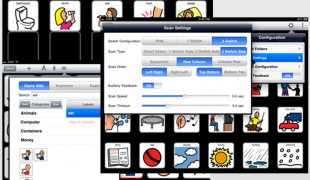- 2373
- 230
- 3
- 3
- 0
- Help Ukraine
About the solution
The population most affected by the COVID-19 pandemic has undoubtedly been the elderly. In addition to the mortality rate being higher, they are the public that most needs social isolation, which will consequently lead to greater suffering because it is difficult for them to communicate with their children and grandchildren. It was with this in mind that Manuel Lucio Dallo, a software engineer, built Yayagram, a project he created specially to help his grandmother Felisa Romano Martin, 96, send and receive voice and text messages through Telegram, in other words, works in an analog way. The system is simple and straight forward. We have a box that resembles an old communication device, but why this old way? This aesthetic choice was purposed, to facilitate its use. Felisa connects in cable with her name on one end, on another plug, with the name of the grandchild with whom she wants to communicate, then she just presses a button and speaks into the microphone, and when she releases the button, the message will be sent and received by the grandchild, the system is common to a voice message sent on Telegram. The answers are sent to the "Yaya" by text, which she receives printed through the device. The purpose of this creation was to bring the grandmother closer to her grandchildren at a time like the pandemic, and to facilitate her independence for such communication (Felisa suffers from arthritis, and so the use of tablets or other devices that require typing on a keyboard was out of the question for causing pain). In addition, because you have hearing problems, the use of the phone is also complicated for grandmothers, grandchildren, or children, as they can cause frustration in both parties due to the difficulties in communicating. Thus, the device created by the engineer's grandson has been improving communication difficulties and longing among the family.
Adapted from: https://canaltech.com.br/inovacao/neto-constroi-maquina-para-a-avo-de-96...
This solution shall not include mention to the use of drugs, chemicals or biologicals (including food); invasive devices; offensive, commercial or inherently dangerous content. This solution was not medically validated. Proceed with caution! If you have any doubts, please consult with a health professional.
DISCLAIMER: This story was written by someone who is not the author of the solution, therefore please be advised that, although it was written with the utmost respect for the innovation and the innovator, there can be some incorrect statements. If you find any errors please contact the patient Innovation team via info@patient-innovation.com
-
-
394
-
0
-
4100

Student designs sensory pod inspired by autistic son
CAREGIVING
COMMUNICATION: Communicating, whether by speaking, listening, or other means
Attend Concerts/Performances
Autism
Strategy/Tip
Assistive Daily Life Device (to help ADL)
Irritability or anger outbursts
Panic attacks
Racing thoughts
Feelings of guilt or worthlessness
Fatigue
Promoting self-management
Building Supportive Community Relationships
Promoting inclusivity and social integration
Enhancing Mental Health
Improving Speech and Communication
Preventing (Vaccination, Protection, Falls, Research/Mapping)
Raise awareness
Caregiving Support
Child and Adolescent Psychiatry
General and Family Medicine
Pediatrics
Psychiatry
United Kingdom
-
-
-
765
-
0
-
17093

Proloquo2Go – App to help people communicate
CAREGIVING
COMMUNICATION: Communicating, whether by speaking, listening, or other means
Social interaction
Paralysis
Autism
Cerebral Palsy
Brain Stroke
Brain Injury (Abscess, Brain Barrier Defect, Brain Contusion, Brain Hemorrhage, Brain Edema)
Assistive Daily Life Device (to help ADL)
Assistive Technology access
App (Including when connected with wearable)
Tremors
Muscle cramps or spasms
Difficulty coordinating movements
Muscle weakness
Difficulty speaking or understanding speech
Trouble with fine motor skills (e.g., writing, buttoning clothes)
Twitching or involuntary movements (myoclonus)
Acquired language impairment (Aphasia)
Promoting self-management
Managing Neurological Disorders
Building Supportive Community Relationships
Promoting inclusivity and social integration
Improving Speech and Communication
Caregiving Support
Clinical Pathology
Medical Genetics
Neurology
Pediatrics
Rheumatology
Netherlands
-
-
-
712
-
6
-
16283

App to teach communication
COMMUNICATION: Communicating, whether by speaking, listening, or other means
CAREGIVING
Autism
Cerebral Palsy
Angelman's Syndrome
Rett’s Syndrome
Website
Social withdrawal or isolation
Difficulty speaking or understanding speech
Promoting self-management
Building Supportive Community Relationships
Promoting inclusivity and social integration
Improving Speech and Communication
Caregiving Support
Child and Adolescent Psychiatry
General and Family Medicine
Neurology
Pediatrics
United States
-
 en
en